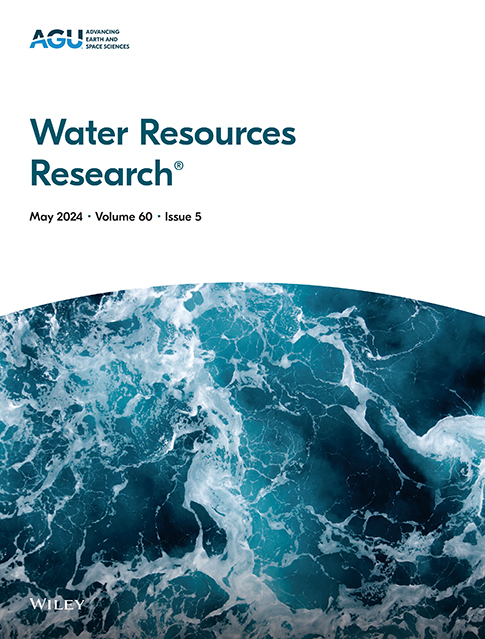Linking Stochastic Resonance With Long Short-Term Memory Neural Network for Streamflow Simulation Enhancement
IF 5
1区 地球科学
Q2 ENVIRONMENTAL SCIENCES
引用次数: 0
Abstract
The accuracy of peak streamflow simulation is often lower than that of normal streamflow simulation, posing a significant challenge. This study introduces stochastic resonance (SR) to enhance simulation accuracy, utilizing its ability to leverage noise energy to improve correlations between streamflow and meteorological factors. The proposed SR-LSTM model, validated across major Chinese basins, demonstrates that SR effectively enhances the accuracy of streamflow simulations. By using SR, the Nash-Sutcliffe efficiency increased from 0.70 to 0.79, and the kling-gupta efficiency improved from 0.69 to 0.82. Furthermore, this study utilizes the global Caravan streamflow data set (including CAMELES, CAMELESBR, CAMELESAUS, and LamaH) comprising 1,244 station data points to validate the applicability of SR-LSTM. Results indicate that SR improves accuracy at approximately 70% of 1,244 stations, particularly in regions with high-quality data. Comparative analysis shows that incorporating SR enhances the performance of deep learning models, highlighting its potential for improving both global and peak streamflow simulation accuracy. These findings underscore the effectiveness of SR in enhancing streamflow simulation accuracy.将随机共振与长短期记忆神经网络相结合增强水流模拟
峰值流量模拟的精度往往低于正常流量模拟的精度,这是一个重大的挑战。本研究引入随机共振(SR)来提高模拟精度,利用其利用噪声能量的能力来改善河流流量与气象因子之间的相关性。SR- lstm模型在中国主要流域的验证结果表明,SR有效提高了径流模拟的精度。采用SR后,Nash-Sutcliffe效率从0.70提高到0.79,klling -gupta效率从0.69提高到0.82。此外,本研究利用全球Caravan流量数据集(包括CAMELES、CAMELESBR、CAMELESAUS和LamaH),包括1244个站点数据点,验证了SR-LSTM的适用性。结果表明,在1244个站点中,SR提高了大约70%的精度,特别是在高质量数据的地区。对比分析表明,结合SR增强了深度学习模型的性能,突出了其在提高全局和峰值流模拟精度方面的潜力。这些发现强调了SR在提高水流模拟精度方面的有效性。
本文章由计算机程序翻译,如有差异,请以英文原文为准。
求助全文
约1分钟内获得全文
求助全文
来源期刊

Water Resources Research
环境科学-湖沼学
CiteScore
8.80
自引率
13.00%
发文量
599
审稿时长
3.5 months
期刊介绍:
Water Resources Research (WRR) is an interdisciplinary journal that focuses on hydrology and water resources. It publishes original research in the natural and social sciences of water. It emphasizes the role of water in the Earth system, including physical, chemical, biological, and ecological processes in water resources research and management, including social, policy, and public health implications. It encompasses observational, experimental, theoretical, analytical, numerical, and data-driven approaches that advance the science of water and its management. Submissions are evaluated for their novelty, accuracy, significance, and broader implications of the findings.
 求助内容:
求助内容: 应助结果提醒方式:
应助结果提醒方式:


